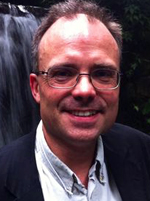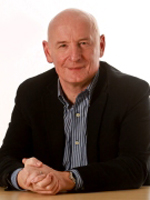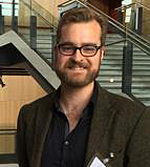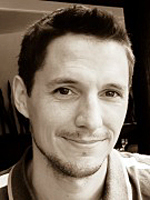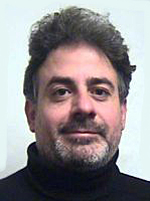UK investing £12m in quantum technology fellowship program
06 Oct 2015
Photonics-related research projects are key to EPSRC's quantum science ambitions; nationwide participation.
The UK’s ability to spearhead research and development in the field of quantum science and technologies has been boosted by the announcement of a £12.00m ($18.25m) investment in a range of new projects, several heavily dependent on photonics. The
Quantum Technologies Fellowships are being funded by the
Engineering and Physical Sciences Research Council (EPSRC) and are designed to support both lead researchers and their teams to “help realize the country’s potential”, stated the launch announcement.
Part of the UK's £270m ($410m) National Quantum Technology Programme, the Fellowships are aimed at Early and Established career stage academics whose research focuses on the direct exploitation of quantum phenomena, such as superposition or entanglement, to address the challenges of translation of quantum science through technology to eventual applications.
Quantum technologies use the properties of quantum physics to gain a functionality or performance which is otherwise unattainable. They promise future dramatic changes in the technological capabilities in several key areas, including secure communications, metrology, sensor technologies, simulation and computation.
UK Government Minister for Universities & Science, Jo Johnson said, “Researchers from across the UK are investigating applications for quantum technology, from advanced communications to improved cancer detection and navigation services. This investment in UK research will support the next generation of scientists and secure our leadership in quantum research.”
Professor Philip Nelson, EPSRC’s Chief Executive, said, “These Fellowships are a key part of the UK’s National Programme for Quantum Technologies. They will push the quantum technologies agenda forward, make new collaborations both to source wider research expertise to overcome technical barriers, and to engage with the industry partners who will potentially utilise these technologies.”
The Fellowships in detail
- Professor John Rarity, University of Bristol – Spin-photon systems for scalable quantum processors It has long been know that light behaves as both wave and particle. For instance in interactions with atoms, photons can be absorbed or emitted. However, the scattering of light by atom-like emitters can lead to photon-like and wave-like effects in the same experiment. Professor Rarity’s project will exploit this behavior using single atom-like light emitters embedded in wavelength scale optical cavities to make ultra-low power optical switches. The wave-particle duality will also allow researchers to make the fundamental gates and memory elements required to build a quantum computer, or repeaters for quantum communications over long distances.
- Professor Peter Smith, University of Southampton: Quantum Integrated Nonlinear Technologies for Enabling Stable, Scaleable, Engineered Commercial Exploitation (QuINTESSEnCE). Professor Smith’s fellowship will develop optical components for low-cost and efficient wavelength conversion, which provides a way to change the “colors” of single photon, offering breakthroughs in telecommunications, imaging and quantum science.
- Professor Gerald Buller, Heriot-Watt University: Next Generation Imaging using Sparse Single-Photon Data. This Fellowship will examine the next generation of imaging systems enabled by quantum technology. This includes forms of three-dimensional imaging accurately captured using laser-based illumination. This will be extended to high-resolution imaging under extreme low-light level conditions where we have, on average, less than one photon per pixel. Furthermore, the use of quantum-entangled photons will used to improve image quality in certain key, niche application areas.
- Dr Elham Kashefi, University of Edinburgh: Verification of Quantum Technology. This project seeks to verify and validate potential quantum technologies, from full scale computers and simulators, to communication networks with devices of varying size and complexity, down to realistic gadgets based on quantum technology. This is a key challenge in the transition from theory to practice for quantum computing technologies.
- Professor Douglas Paul, University of Glasgow: Engineering Quantum Technology Systems on a Silicon Platform. The vision of this project is to develop practical quantum technology for the accurate measurement of electrical currents and to develop high sensitivity detectors for gases such as carbon dioxide, methane and carbon dioxide.
- Dr Jonathan Matthews, University of Bristol: Photonic Quantum-Enhanced Sensors. Harnessing quantum states of light will overhaul the way we measure physical parameters and quantify our environment. This fellowship aims to use the scalability and manufacturability of integrated photonics to realize revolutionary quantum enhanced approaches to sensing. This will enable capabilities beyond the state of the art and beyond the limits of classical physics for a range of measurement systems, including spectroscopy and interferometry.
- Dr Earl Campbell, University of Sheffield: Towards fault-tolerant quantum computing with minimal resources. In the quantum realm, data is quickly garbled by a pervading crackle of noise. This fellowship will design quantum computers that run smoothly despite noise, refreshing data quicker than it degrades. Current designs lock up over 99% of computational resources to prevent them outputting meaningless junk. The goal is to devise a reliably technology with minimal resources dedicated to these operational overheads.
Dr Alessandro Fedrizzi, Heriot-Watt University: QuigaByte-Gigahertz-clocked telecom cluster states for next generation quantum photonics. Quantum photonics will be the first quantum technology to make a noticeable impact on society. The aim of this fellowship is to use cutting-edge technology to drastically speed up the generation rates of entangled photonic quantum bytes. These will be applied to a range of quantum tasks: secure quantum encryption with trusted devices, quantum-enhanced imaging, and all-optical quantum networking protocols.
- Dr Jose Verdu Galiana, University of Sussex: Quantum Microwave Sensor. The aim of this fellowship is to develop a functional detector of single microwave photons. Such a detector is essential for implementing practical applications in quantum communications and quantum computation with microwaves. The team will employ trapped electrons as ultra-sensitive sensors of microwave radiation.
- Dr Jonathan Pritchard, University of Strathclyde: A Hybrid Atom-Photon-Superconductor Quantum Interface. This proposal aims to develop a hybrid device combining atoms and superconducting circuits to provide a route to next-generation technology capable of manipulating light at the single photons to enable scalable quantum networking.
Open Day in London: November 11
The UK National Quantum Technologies Program aims to ensure the successful transition of quantum technologies from laboratory to industry. The programme is delivered by EPSRC, Innovate UK, BIS, NPL, GCHQ, Dstl and the KTN. For more information, visit the UK National Quantum Technologies Program.
Quantum Technologies Showcase 2015 taking place on 11 November 2015 at The Royal Society. To attend, you can book your free ticket at UK National Quantum Technology Showcase 2015 - Event and Conference.
About the Author
Matthew Peach is a contributing editor to optics.org.

